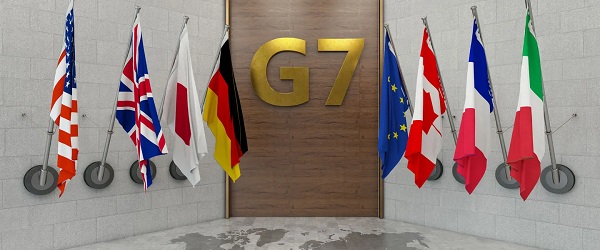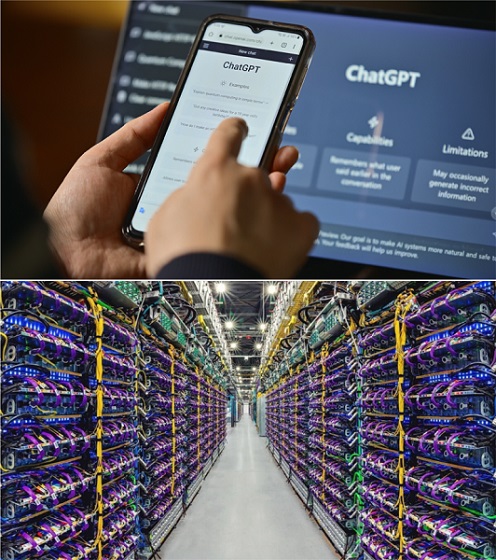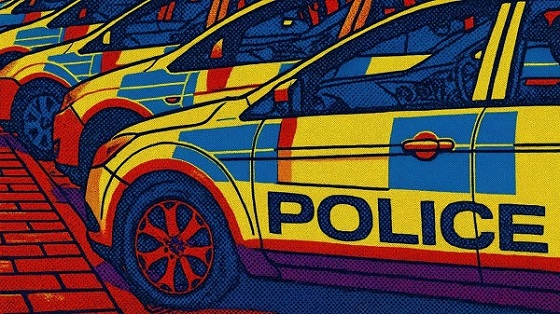Business
Canada’s finances deteriorated faster than any other G7 country

From the Fraser Institute
By Jake Fuss and Grady Munro
Some analysts compare Canada’s fiscal health with other countries in the Group of Seven (G7) to downplay concerns with how Canadian governments run their finances. And while it’s true that Canada’s finances aren’t as bad some other countries, the data show Canada’s finances are deteriorating fastest in the G7, and if we’re not careful we may lose any advantage we currently have.
The G7 (Canada, France, Germany, Italy, Japan, the United Kingdom and the United States) represents seven of the world’s most advanced economies and some of Canada’s closest peer countries. As such, many commentators, organizations and governments use Canada’s standing within the group as a barometer of our fiscal health. Indeed, based on his oft-repeated goal to “build the strongest economy in the G7,” Prime Minister Carney himself clearly sees the G7 as a good comparator group for Canada.
Two key indicators of a country’s finances are government spending and debt, both of which are often measured as a share of gross domestic product (GDP) to allow for comparability across jurisdictions with various sized economies. Government spending as a share of GDP is a measure of the overall size of government in a country, while government debt-to-GDP is a measure of a country’s debt burden. Both the size of government in Canada and the country’s overall debt burden have grown over the last decade.
This is a problem because, in recent years, government spending and debt in Canada have reached or exceeded thresholds beyond which any additional spending or debt will most likely harm economic growth and living standards. Indeed, research suggests that when government spending exceeds 32 per cent of GDP, government begins to take over functions and resources better left to the private sector, and economic growth slows. However, the issues of high spending and debt are often downplayed by comparisons showing that Canada’s finances aren’t as bad as other peer countries—namely the rest of the G7.
It’s true that Canada ranks fairly well among the G7 when comparing the aforementioned measures of fiscal health. Based on the latest data from the International Monetary Fund (IMF), a new study shows that Canada’s general government (federal, provincial and local) total spending as a share of GDP was 44.7 per cent in 2024, while Canada’s general government gross debt was 110.8 per cent of GDP. Compared to the G7, Canada’s size of government ranked 4th highest while our overall debt burden ranked 5th highest.
But while Canada’s size of government and overall debt burden rank middle-of-the-pack among G7 countries, that same study reveals that Canada is not in the clear. Consider the following charts.

The first chart shows the overall change in general government total spending as a share of GDP in G7 countries from 2014 to 2024. Canada observed the largest increase in the size of government of any G7 country, as total spending compared to GDP increased 6.34 percentage points over the decade. This increase was nearly three times larger than the increase in the U.S., and both France and Italy were actually reduced their size of government during this time.

The second chart shows the overall change in general government gross debt as a share of GDP over the same decade, and again Canada experienced the largest increase of any G7 country at 25.23 percentage points. That’s considerably higher than the next closest increases in France (16.97 percentage points), the U.S. (16.36 percentage points) and the U.K. (14.13 percentage points).
Simply put, the study shows that Canada’s finances have deteriorated faster than any country in the G7 over the last decade. And if we expand this comparison to a larger group of 40 advanced economies worldwide, the results are very similar—Canada experienced the 2nd highest increase in its size of government and 3rd highest increase in its overall debt burden, from 2014 to 2024. Some analysts downplay mismanagement of government finances in Canada by pointing to other countries that have worse finances. However, if Canada continues as it has for the last decade, we’ll be joining those other countries before too long.
Alberta
Falling resource revenue fuels Alberta government’s red ink

From the Fraser Institute
By Tegan Hill
According to this week’s fiscal update, amid falling oil prices, the Alberta government will run a projected $6.4 billion budget deficit in 2025/26—higher than the $5.2 billion deficit projected earlier this year and a massive swing from the $8.3 billion surplus recorded in 2024/25.
Overall, that’s a $14.8 billion deterioration in Alberta’s budgetary balance year over year. Resource revenue, including oil and gas royalties, comprises 44.5 per cent of that decline, falling by a projected $6.6 billion.
Albertans shouldn’t be surprised—the good times never last forever. It’s all part of the boom-and-bust cycle where the Alberta government enjoys budget surpluses when resource revenue is high, but inevitably falls back into deficits when resource revenue declines. Indeed, if resource revenue was at the same level as last year, Alberta’s budget would be balanced.
Instead, the Alberta government will return to a period of debt accumulation with projected net debt (total debt minus financial assets) reaching $42.0 billion this fiscal year. That comes with real costs for Albertans in the form of high debt interest payments ($3.0 billion) and potentially higher taxes in the future. That’s why Albertans need a new path forward. The key? Saving during good times to prepare for the bad.
The Smith government has made some strides in this direction by saving a share of budget surpluses, recorded over the last few years, in the Heritage Fund (Alberta’s long-term savings fund). But long-term savings is different than a designated rainy-day account to deal with short-term volatility.
Here’s how it’d work. The provincial government should determine a stable amount of resource revenue to be included in the budget annually. Any resource revenue above that amount would be automatically deposited in the rainy-day account to be withdrawn to support the budget (i.e. maintain that stable amount) in years when resource revenue falls below that set amount.
It wouldn’t be Alberta’s first rainy-day account. Back in 2003, the province established the Alberta Sustainability Fund (ASF), which was intended to operate this way. Unfortunately, it was based in statutory law, which meant the Alberta government could unilaterally change the rules governing the fund. Consequently, by 2007 nearly all resource revenue was used for annual spending. The rainy-day account was eventually drained and eliminated entirely in 2013. This time, the government should make the fund’s rules constitutional, which would make them much more difficult to change or ignore in the future.
According to this week’s fiscal update, the Alberta government’s resource revenue rollercoaster has turned from boom to bust. A rainy-day account would improve predictability and stability in the future by mitigating the impact of volatile resource revenue on the budget.
Business
Higher carbon taxes in pipeline MOU are a bad deal for taxpayers

The Canadian Taxpayers Federation is criticizing the Memorandum of Understanding between the federal and Alberta governments for including higher carbon taxes.
“Hidden carbon taxes will make it harder for Canadian businesses to compete and will push Canadian entrepreneurs to shift production south of the border,” said Franco Terrazzano, CTF Federal Director. “Politicians should not be forcing carbon taxes on Canadians with the hope that maybe one day we will get a major project built.
“Politicians should be scrapping all carbon taxes.”
The federal and Alberta governments released a memorandum of understanding. It includes an agreement that the industrial carbon tax “will ramp up to a minimum effective credit price of $130/tonne.”
“It means more than a six times increase in the industrial price on carbon,” Prime Minister Mark Carney said while speaking to the press today.
Carney previously said that by “changing the carbon tax … We are making the large companies pay for everybody.”
A Leger poll shows 70 per cent of Canadians believe businesses pass most or some of the cost of the industrial carbon tax on to consumers. Meanwhile, just nine per cent believe businesses pay most of the cost.
“It doesn’t matter what politicians label their carbon taxes, all carbon taxes make life more expensive and don’t work,” Terrazzano said. “Carbon taxes on refineries make gas more expensive, carbon taxes on utilities make home heating more expensive and carbon taxes on fertilizer plants increase costs for farmers and that makes groceries more expensive.
“The hidden carbon tax on business is the worst of all worlds: Higher prices and fewer Canadian jobs.”
-

 Alberta2 hours ago
Alberta2 hours agoFrom Underdog to Top Broodmare
-

 Energy1 day ago
Energy1 day agoPoilievre says West Coast Pipeline MOU is no guarantee
-

 Crime2 days ago
Crime2 days agoB.C.’s First Money-Laundering Sentence in a Decade Exposes Gaps in Global Hub for Chinese Drug Cash
-

 International2 days ago
International2 days agoTrump orders 500 more troops to reinforce D.C. after Guard shooting
-

 Artificial Intelligence2 days ago
Artificial Intelligence2 days agoTrump’s New AI Focused ‘Manhattan Project’ Adds Pressure To Grid
-

 International1 day ago
International1 day agoAfghan Ex–CIA Partner Accused in D.C. National Guard Ambush
-

 Alberta1 day ago
Alberta1 day agoAlberta and Ottawa ink landmark energy agreement
-

 Crime2 days ago
Crime2 days agoFBI Seizes $13-Million Mercedes Unicorn From Ryan Wedding’s Narco Network












